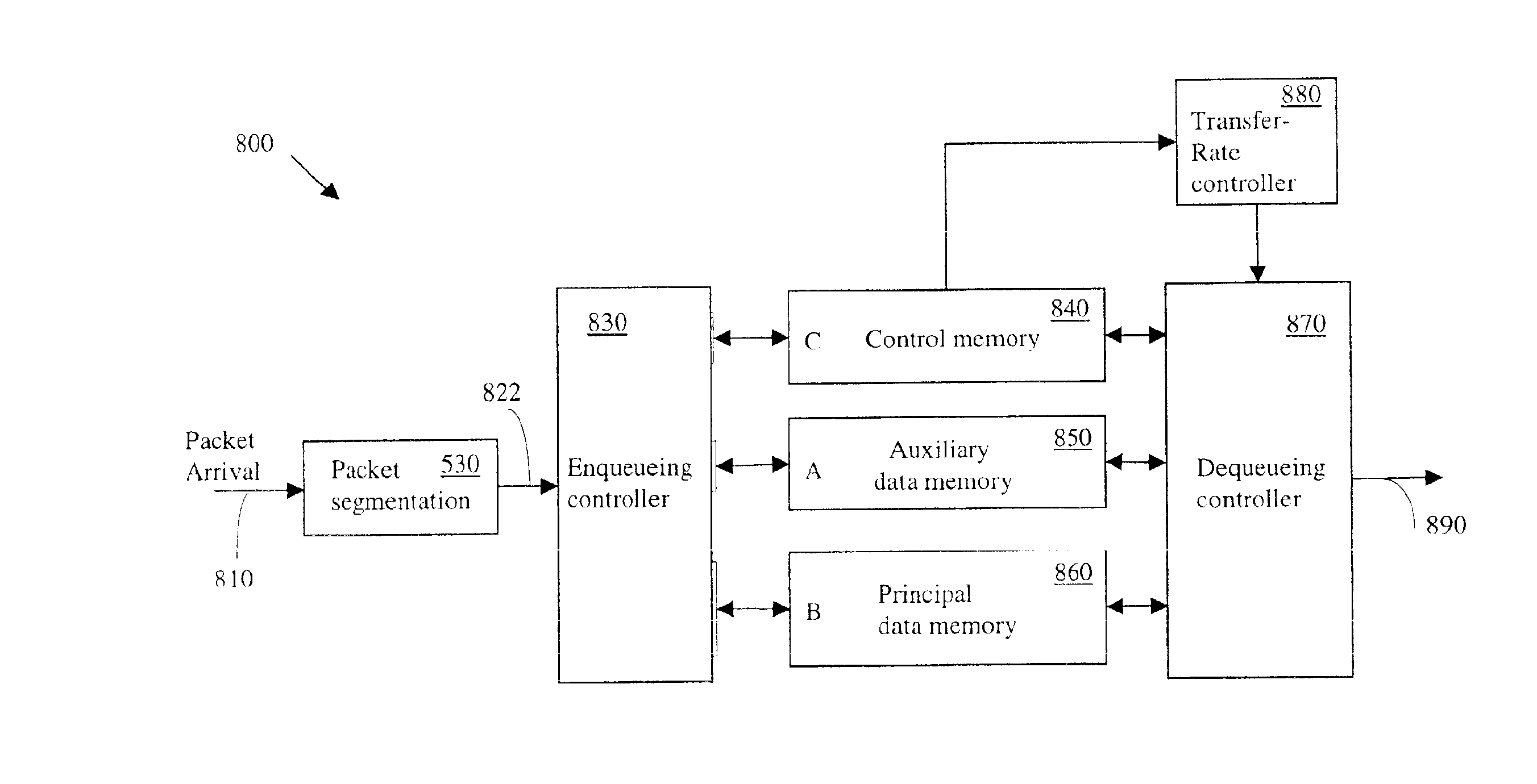Compact segmentation of variable-size packet streams
a packet stream and variable-size technology, applied in the field of data networks, can solve the problems of large proportion of cells becoming poorly utilized, wasting relatively high capacity, and difficult to characterize data and standardize a cell siz
- Summary
- Abstract
- Description
- Claims
- Application Information
AI Technical Summary
Benefits of technology
Problems solved by technology
Method used
Image
Examples
Embodiment Construction
[0045]This invention relates to a communication network transferring variable-size data packets. Packets that belong to the same data stream may be concatenated and segmented into fixed-size data blocks, a data stream being defined according to predefined attributes, such as its origin and destination. When multiple paths are provided from a point of origin to a given destination, the traffic in each path is treated as a distinct traffic stream. Packets can first be segmented, in a conventional manner, into fixed-size data blocks, hereafter also called data segments or simply segments, which may contain filler null data. A fully utilized segment is hereinafter called a “complete segment” and a null-padded incomplete segment is called a “fractional segment”. FIG. 1 is a schematic diagram illustrating the segmentation of variable-size packets. The size of a segment is standardized across a respective network. A packet 110 is divided into an integer number of segments, the last of whic...
PUM
 Login to View More
Login to View More Abstract
Description
Claims
Application Information
 Login to View More
Login to View More - R&D
- Intellectual Property
- Life Sciences
- Materials
- Tech Scout
- Unparalleled Data Quality
- Higher Quality Content
- 60% Fewer Hallucinations
Browse by: Latest US Patents, China's latest patents, Technical Efficacy Thesaurus, Application Domain, Technology Topic, Popular Technical Reports.
© 2025 PatSnap. All rights reserved.Legal|Privacy policy|Modern Slavery Act Transparency Statement|Sitemap|About US| Contact US: help@patsnap.com



